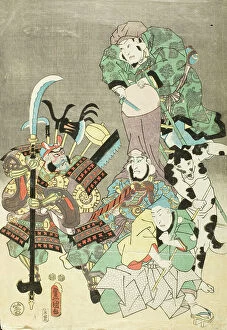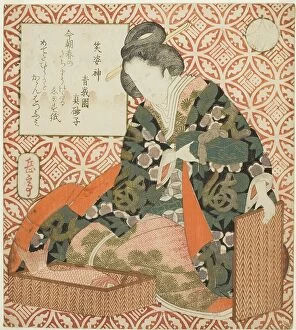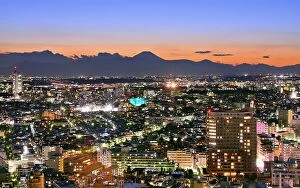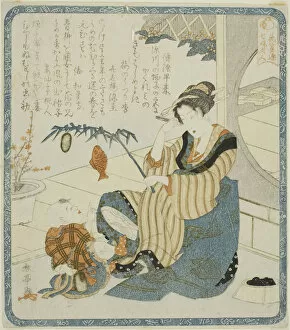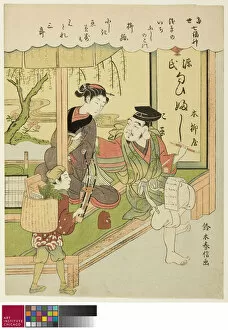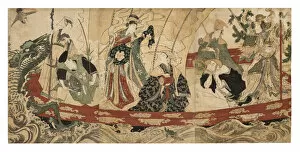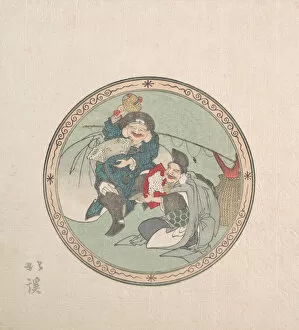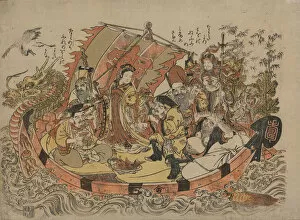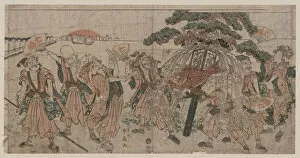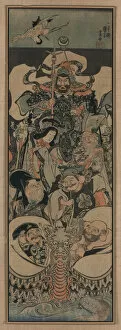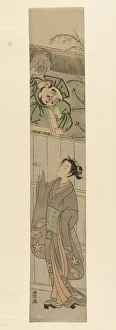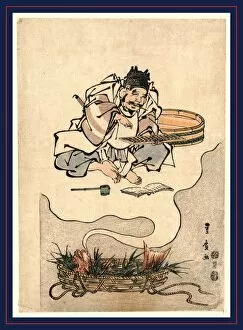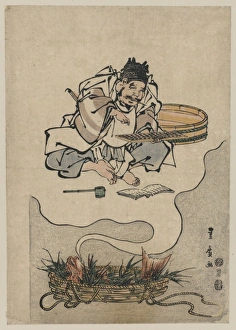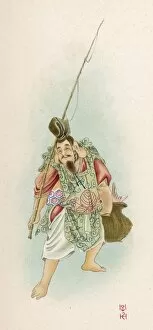Ebisu Collection
"Ebisu: The God of Good Fortune and Blessings" Ebisu, a beloved deity in Japanese folklore, is often depicted as a jovial and kind figure
All Professionally Made to Order for Quick Shipping
"Ebisu: The God of Good Fortune and Blessings" Ebisu, a beloved deity in Japanese folklore, is often depicted as a jovial and kind figure. In the artwork "A Woman as Ebisu, " created by Katsukawa Shuntei around 1820, we see the portrayal taking on a female form. This unique representation showcases the fluidity and adaptability of this god. Another famous depiction can be found in Hokusai's work from 1797. Alongside Daikoku, another god associated with wealth and prosperity, Ebisu stands tall as one of Japan's gods of fortune. Their presence symbolizes abundance and good luck for those who believe in their power. In modern times, artists continue to explore the significance in everyday life. The series "The Seven Gods of Good Luck in Modern Life" captures Ebisu's essence within contemporary settings. These artworks remind us that fortune can be found not only in ancient traditions but also amidst our modern world. Woodblock prints from the early 19th century depict actors embodying the Seven Gods of Fortune aboard a treasure ship. Among them is Ebisu, radiating joy while spreading blessings to all who encounter him on this majestic vessel. Utagawa Toyohiro beautifully portrays Ebisu alongside Benten walking through snow-covered landscapes—a testament to his enduring presence even during harsh winters when hope may seem scarce. Throughout history, various artists have paid homage to these gods through their works. Kitao Shigemasa's masterpiece from between 1775-1780 depicts all seven lucky gods together—each representing different aspects of prosperity and happiness they bring into people's lives. Shunsen (Shunko II), Katsukawa captures their vibrant personalities once again during the 1810s; an anonymous artist continues this tradition circa 1878.



